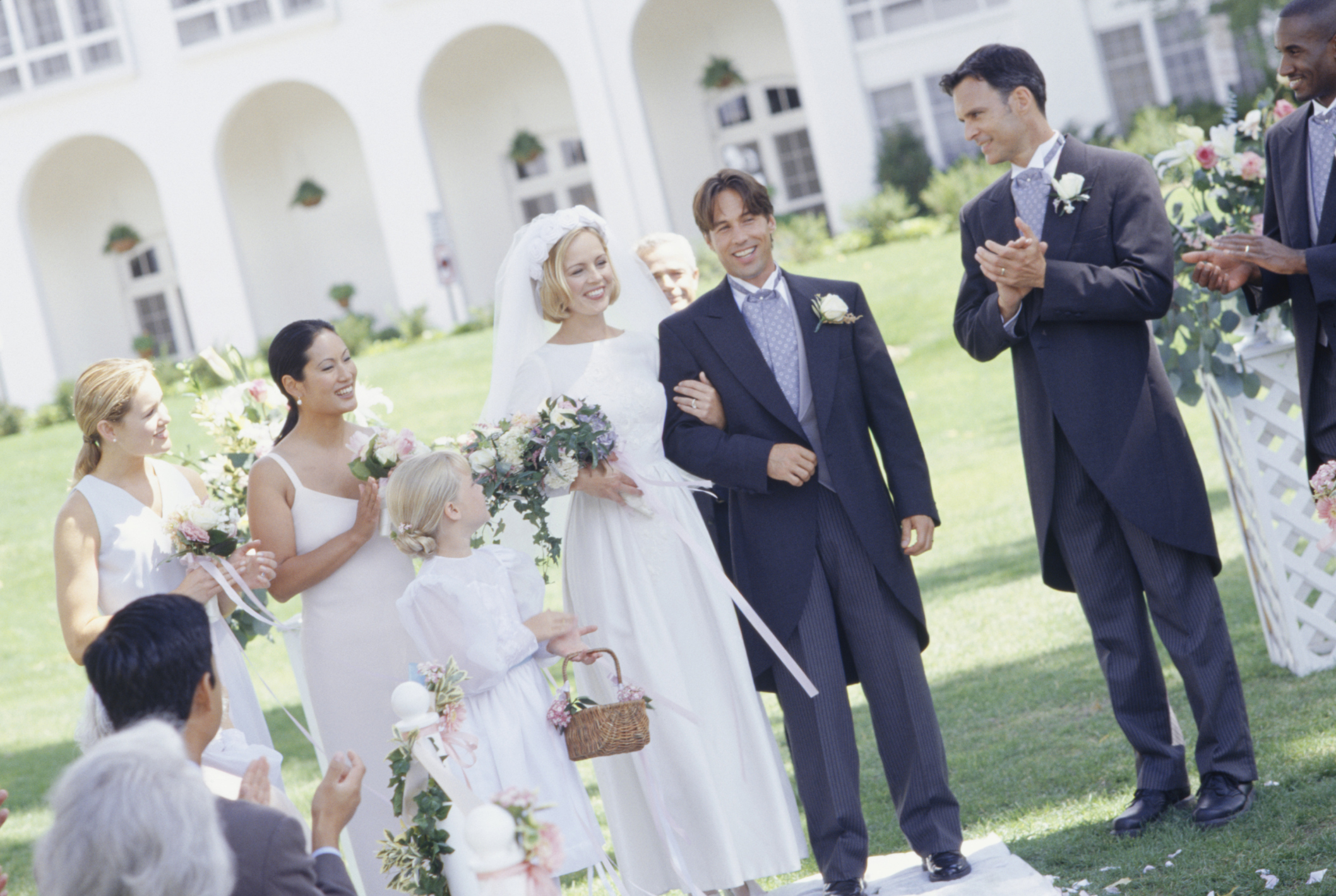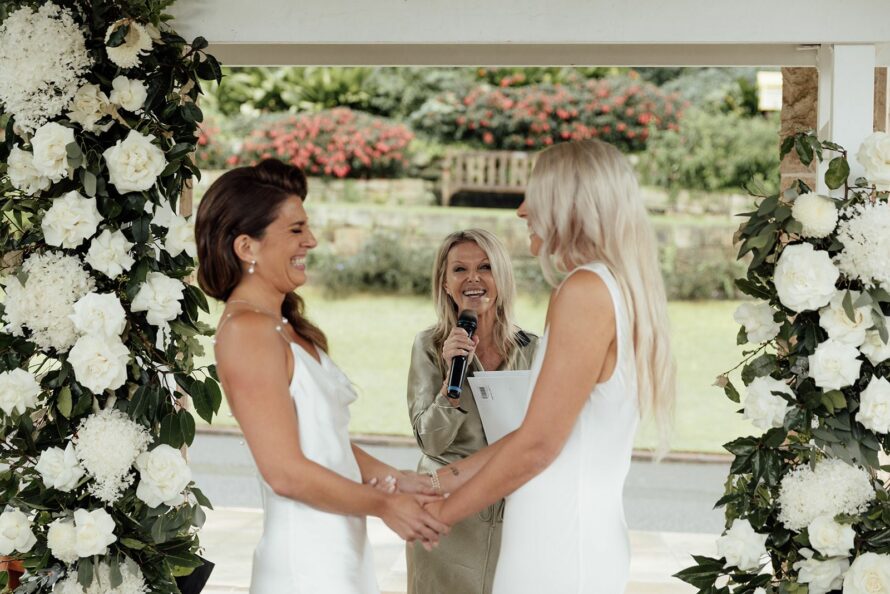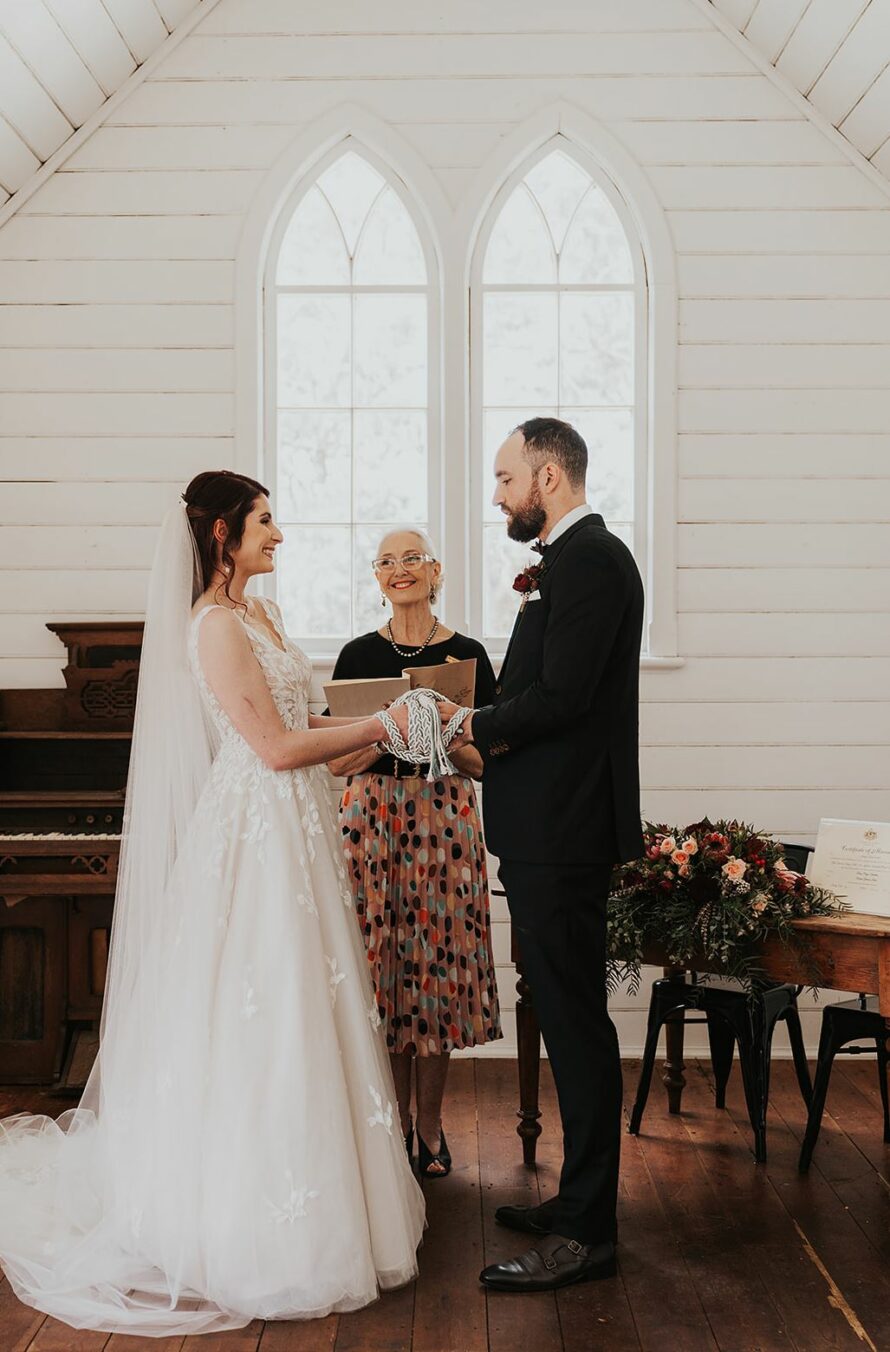A sometimes contentious issue is where do you stand during the ceremony? What compounds this issue is a bride’s parents were generally married in a church, but the bride is being married in a park. There is a significant difference in how a civil celebrant operates without an alter as opposed to a religious celebrant who operates with an altar.
But first…a bit of history. It is essential to explain how it used to be, because what you see on TV is not always the REAL tradition.
In Anglo-Saxon England, the Best Man would act as a bodyguard for both the groom and the bride. During Anglo-Saxon England weddings the bride would stand to the left of her groom so that his sword arm was free. The Best Man would keep his hand on his sword ready to fend off trouble and protect the couple. Often during these times, the best swordsman in the area was chosen as the Best Man.
The tradition of the Best Man began in ancient Germany. In olden days it was realised that continual marriage within the village would eventually lead to issues with children. Today, we recognise this as inbreeding.
Therefore, because other villages may not make a bride available, it often became necessary for a man to kidnap his bride from a that village and he needed his strongest friend (his Best Man) to help with the kidnapping and to stand by him at the wedding ceremony to fight off any relatives that might try to take her back.
The essential thing to consider here is, the bride would stand to the left of her groom so that his sword arm was free and he wouldn’t spit or cut her with his sword if he needed to draw if quickly!.
Of course, today, the bride still stands to the left side of her groom, thus causing the grief that sometimes occurs in a civil ceremony.
Where do you stand during the ceremony? Which side?
Wedding ceremony positions can cause some dramas, especially when relatives demand to sit on the “correct” side. The real issue is, few people have ever analysed the difference between a civil ceremony and a church ceremony. So what, you ask? Read on, you might be quite surprised!
In a church ceremony, consider where the religious celebrant will be standing? He/she will be at the alter, which means the bridal couple and their attendants will be facing the alter, resulting in their backs being to the guests.
Remember the earlier paragraph concerning which side the bride should stand on? Yes – the left side of the groom, meaning the left side of the church, with the blokes to the right.
Of course, when the bridal procession is entering the church, the groom and his attendants are facing the guests, but they turn around to face the alter.
What if the ceremony is a civil ceremony conducted either outdoors, or in a de consecrated church? Where does the celebrant stand, since this will have a significant effect on the positions. OK, I’m getting technical, but so do many brides and their parents. Put simply, if you want to be technical (I’m not rude enough to say “pedantic”), then you really need really be correct!
If the celebrant operates between the bridal party and the guests, the couple and their attendants will be facing the gathering. IN this case, the question is; where should you therefore stand?
Historically, the bride remains on the groom’s left, therefore, the bride and her attendants should be to the right as the guests look to the front. This of course, is the reverse of within a church with a religious celebrant presiding.
Of course, way back in the distant past, the groomsmen would all have been standing ready with their hands on the hilts of their swords and constantly scanning the area all around them.
As a civil celebrant, I have a huge advantage over a religious celebrant since I am not required to observe church dogma and protocol and can therefore stand where I like. Because I use a wireless head-set microphone system, I am free to move wherever I need to. Therefore, I ensure the bride and groom initially face the guests, then, as I proceed, I ensure the couple are facing each other. I generally place my portable lectern in front of the bride’s attendants so as not obscure the bride and her groom.
If I am working in a church or small chapel, where I stand is often determined by the size of the chapel and the number of attendants – quite simply, how much room is there?
Now, that raises a point…. what if you have a large number of attendants and there isn’t much room? Don’t be afraid to have them sit down in the front row of pews where they are facing you. This then elevates the bride and groom to a featured status with no other distractions in the image.
How should your attendants stand?
It is not unusual that a celebrant will be faced with a couple having 5 or more attendants EACH. One bride simply refused to listen to my suggestion of what it would look like with their 6 attendants standing straight out either side.
Quite frankly, I was extremely nervous during the ceremony, since I felt the need to constantly look around in case Warnie was coming in to bowl a wrong’un to all the people standing in the slips position.
So, how should you all stand? It’s up to you, but raise the matter with me (or your celebrant) and you may well be surprised at the easy solution to the problem. It can be as simple as having your attendants form a semi circle around you.
Equally important is to not bunch up your attendants. They should be well spaced such that the photographer can take photos of each individually without the next person appearing in the photo.
This article was provided by: Philip Greentree CMC
All information contained within this page is copyright (c) Philip Greentree CMC




